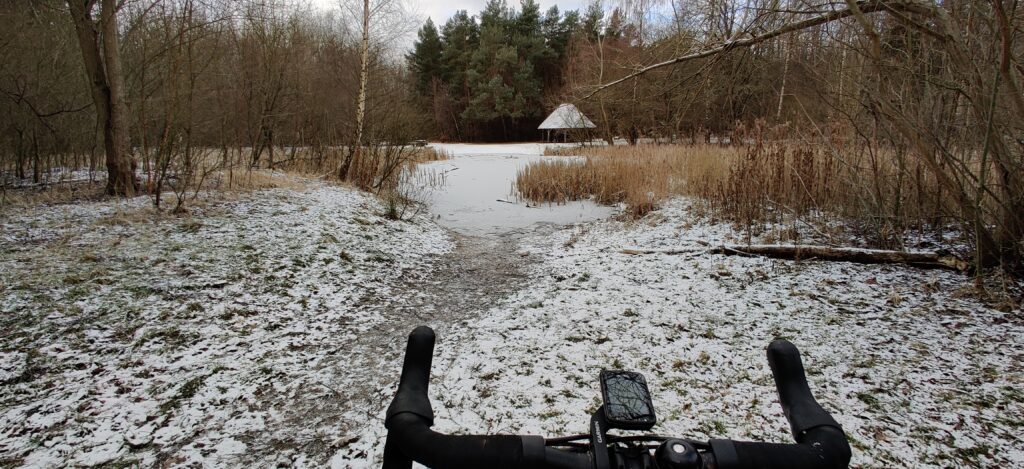
When it’s cold, wet and windy outside, having the right winter cycling clothes is essential to enjoy cycling. Riding through the winter is where the dedicated rider gains their edge in fitness. It takes true motivation to go out for a ride, when you watch the dreary weather from the comfort of he couch. But once you get on the bike and through the warm-up, the weather really doesn’t matter all that much. As long as you dress properly, you will be just fine.
Guidelines for winter cycling clothes
At the start of your ride, you should be a little cold. Once you get 5-10 minutes into the ride, your body will be thoroughly warm, and you will start to sweat a lot if you didn’t start out on the cool side.
Picking many thin layers over one thick layer, will allow you to adjust on the ride. The longer you get into your ride, your body will start to generate less heat. So if you plan for more than three hours, carrying an extra layer for the final bit can be a good idea. Depending on your route and the weather, you might also need to adjust your clothes while riding. If you hit a rain shower on the way, or a part of the route is a very windy area, being able to adjust to the conditions is crucial. Otherwise the part of ride after that bit can be asolutely miserable.
Cycling winter jacket
A good winter jacket is the most important piece of clothes in your winter cycling clothes collection. Keeping your core temperature in good condition is essential for the rest of your body. A good winter jacket should have proper insulation against wind, but also allow breathability in strategic areas. It should also be rainproof to at least some degree. It’s hard to find completely dry conditions in the winter. You will often encounter wet roads with spray or occasional rain showers.
Check our review of some of the top brands.
Gloves
In the summer, it can be fine to ride without gloves, even though they are pretty good protection if you should crash. But in the winter, cold hands will reduce your ability to brake and change gear. It’s always a tricky balance, as too thick gloves won’t give you a good grip on the handlebars and brake levers. Consider gloves that will allow you to operate your head unit/computer while wearing them.
Shoe covers
Having cold feet is one of the worst things that comes with riding in the winter. While all cyclist will experience not being able to feel their feet sometimes, good shoe covers will get you a long way. Having proper insulation against the cold wind and water is important, but you should also consider extra thick merino wool socks, and even wearing two pairs can be nice sometimes, if your shoe will fit it. Shoe covers come in various lengths and materials, but some of the most hardcore are the SPATZ Roadman 3.
Hat
When the temperature drops, one of the first things to cover is the ears. Some riders can ride in freezing temperatures with bare ears, but for the majority, covering them up is one of the first steps when temperature drops. A headband can be fine until close to freezing temps, but at some point you will need to cover the top of your head as well. It can be tricky to find a good hat, as it also needs to fit under your helmet. Combining a headband with a thin hat, can be a viable solution in some situations.
Winter tights
In the realm of winter cycling, a paramount consideration is the selection of appropriate winter tights. Engineered with insulation and wind-resistant fabrics, these garments act as a crucial barrier against the biting cold. Look for designs that prioritise flexibility and comfort, featuring articulated knees for ease of movement. Ankle zippers and reflective elements contribute to both practicality and safety during low-light conditions.
Snood
A must-have accessory is the versatile snood. This circular scarf, provides essential protection against the biting cold. Crafted from insulating and moisture-wicking materials, it shields the neck and face from chilling winds while managing perspiration. The adjustable design allows for various styling options. You can just have it around the neck, but also pull it up over your mouth and nose, or even pull it up the back to almost become a balaclava.
Base layer
Having a couple of different base layers is a good way to regulate when temperature changes. If you only have one winter jacket, changing base layer between a thick merino wool and a normal base layer will make your jacket work for a much broader range of temperatures.
Other upper body essential winter cycling clothes
Having a variety of rain jackets, vests, jerseys and socks will allow you to regulate based on the temperature. Coupling many thin layers is much more flexible, and allows you to adjust mid-ride, and dress for the weather on any given day.